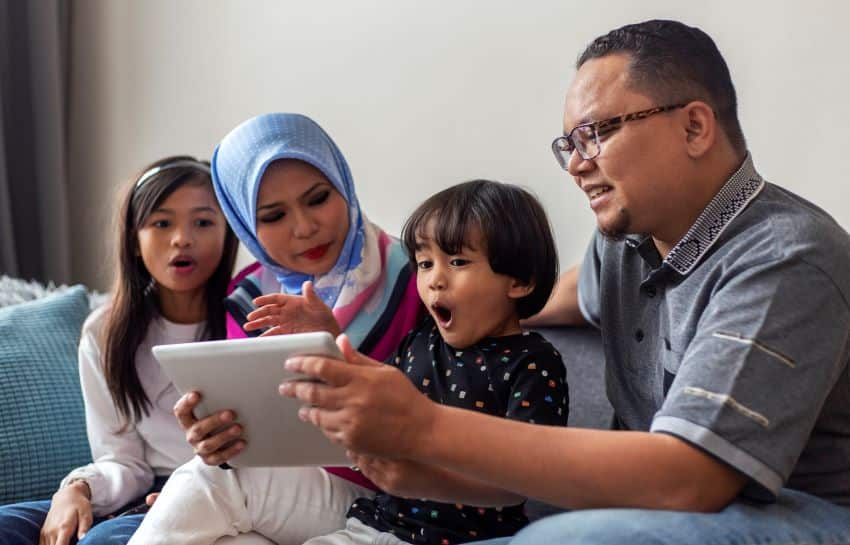5 Ways to Manage Your Child’s Screen Time

Technology is part of our everyday lives. It’s how we connect, work, learn, and unwind. In today’s world, screens are everywhere, and for parents, children’s screen use can feel like a constant balancing act. Whether you view screen time as a helpful tool or a looming concern, it’s important to actively manage it.
Managing screen time goes beyond simply limiting access. It’s about helping children build healthy digital habits they’ll carry for the rest of their lives. We’ve put together five tips to help you manage your child’s screen time.
How to Manage Screen Time for Young Children
1. Model Healthy Digital Habits
Children learn by watching the adults around them. If you want your child to responsibly use technology, make sure you’re setting a good example. Set boundaries for your own screen time, especially during family time, meals, and bedtime. Show them how to enjoy life beyond the screen.
2. Encourage Engaging Offline Activities
A great way to decrease screen time is to offer fun alternatives. Plan activities such as game nights, bike rides, park visits, or trips to the museum. Children are more likely to unplug when they’re engaged in something fun and meaningful.
3. Make Screen Time Earned, Not Expected
Encourage the mindset by treating screen time as a privilege. Have your child complete simple tasks like chores or homework before allowing access to devices. This not only limits screen exposure but also builds responsibility.
4. Keep Devices in a Central Spot
Designate a shared area – like the living room – for all electronics. This makes it easier to monitor usage and reduces unsupervised screen time. Consider setting up screen-free zones in your home, like the dinner table or bedrooms.
5. Set Clear Limits and Talk About Them
Especially for young children, screen exposure should be minimal. Set daily limits and be consistent. Just as importantly, explain why those limits exist. Children are more likely to cooperate when they understand the reasons behind the rules.

More Ideas for Minimizing Screen Time
Podcast: ‘Quality Screen Time’ with Momo Hayakawa
Check out Season 3, Episode 2 of the Parenting Pickup Podcast where we talk about managing screen time, tech boundaries, and real-life tips for families.
Video: ‘Ideas for Minimizing Screen Time’
For more, watch our latest Iowa Live interview featuring New Horizon Academy Iowa Area Director Kelena Bonnell as she discusses screen time and its effects on young learners.

New Horizon Academy is a nationally recognized preschool and early learning provider with more than 100 daycare centers in Minnesota, Colorado, Iowa, Idaho, and Kansas. Through research-based curriculum and high-quality childcare, New Horizon Academy schools nurture and prepare children to succeed in school and in life.
Schedule a tour to see our safe and secure facilities, meet our experienced teachers, and learn about our dedication to providing the highest quality care for infants, toddlers, and preschoolers. Contact a New Horizon Academy childcare center near you today!



